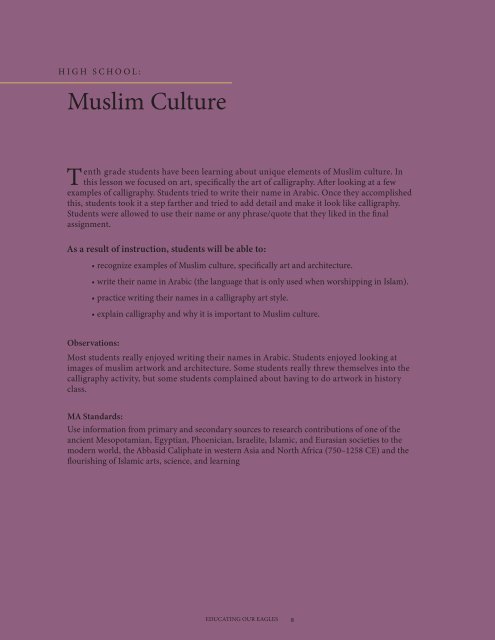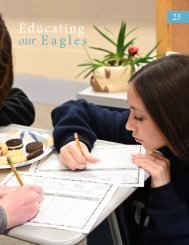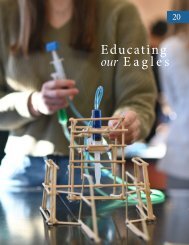Educating Our Eagles - Issue 19
Create successful ePaper yourself
Turn your PDF publications into a flip-book with our unique Google optimized e-Paper software.
HIGH SCHOOL:<br />
Muslim Culture<br />
Tenth grade students have been learning about unique elements of Muslim culture. In<br />
this lesson we focused on art, specifically the art of calligraphy. After looking at a few<br />
examples of calligraphy. Students tried to write their name in Arabic. Once they accomplished<br />
this, students took it a step farther and tried to add detail and make it look like calligraphy.<br />
Students were allowed to use their name or any phrase/quote that they liked in the final<br />
assignment.<br />
As a result of instruction, students will be able to:<br />
• recognize examples of Muslim culture, specifically art and architecture.<br />
• write their name in Arabic (the language that is only used when worshipping in Islam).<br />
• practice writing their names in a calligraphy art style.<br />
• explain calligraphy and why it is important to Muslim culture.<br />
Observations:<br />
Most students really enjoyed writing their names in Arabic. Students enjoyed looking at<br />
images of muslim artwork and architecture. Some students really threw themselves into the<br />
calligraphy activity, but some students complained about having to do artwork in history<br />
class.<br />
MA Standards:<br />
Use information from primary and secondary sources to research contributions of one of the<br />
ancient Mesopotamian, Egyptian, Phoenician, Israelite, Islamic, and Eurasian societies to the<br />
modern world, the Abbasid Caliphate in western Asia and North Africa (750–1258 CE) and the<br />
flourishing of Islamic arts, science, and learning<br />
EDUCATING OUR EAGLES<br />
8

















